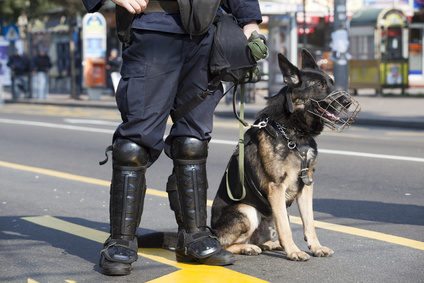
Fatal dog attacks by police K9s are rare. Nonetheless, there are few documented accounts that merit careful attention.
The reason why police canines do not kill people more often stems in part from the circumstances in which police K9 attacks occur. Namely, the handler of the dog, after deploying the dog to search for and apprehend a suspect, is usually nearby to stop the attack. Hence, a fatality can be prevented but severe dog bite injury to the suspect usually happens.
Moreover, K9s are trained to target their bite to a suspect’s torso or the extremities and not the neck. Fatalities resulting from a bite to the chest or arm are rarely fatal. On the other hand, dog bite fatalities usually occur when bites are inflicted to the neck. Bites to the neck of a victim have a good chance of puncturing the carotid artery or jugular vein and when this happens rapid blood loss occurs usually resulting in a quick death.
Dog bite fatalities by police K9s
Below, I list well-documented instances the fatal dog attacks by police K9s.
- 1984. The victim was attacked underneath the car at a car dealership and subsequently died. Read a appellate decision in this matter, Robinette v. Barnes.
- 1990. A homeless woman, Laurene MacLeod, was sleeping in an abandoned house when she was attacked by a police K-9 in West Palm Beach Florida. The dog involved in the incident was a 108 lb. German Shepherd. The K-9 bit the victim extensively throughout her body, even after being handcuffed and while she was lying face down on the ground. MacLeod died 15 hours later in the hospital.
- 2012: An elderly man sleeping under a bush in a residential area was attacked by a police K-9 deployed to search for a burglary suspect. The victim died about a month later in hospital from complications of the attack. This led to a wrongful death civil suit and an award of about $1,500,000 to the victim’s family. Read more.
- 2018: The victim, Joseph Pettaway, was in a private residence making house repairs in Montgomery Alabama. He was mistaken for a burglar. The police were called used their K-9 to search the house. The victim died from a ruptured artery in his leg. Read more about this incident here.
Conclusions
Dog bite fatalities inflicted to people by police canines happen much less frequently than those instances involving companion dogs or dogs used for purposes other than suspect apprehension. The four instances mentioned above, given the circumstances in which the incidences occurred and the vicious nature of police K-9, – substantiate the following conclusions:
- Attack trained police canines can readily kill people:
- Attack-trained police canines should be regarded as a deadly weapons.[1]I note that this runs counter to appellate decisions which have ruled that police K9s are not a lethal force. See Robinette v. Barnes.
Police dog handlers often argue that their dogs are “tools” for suspect apprehension, much like a baton, a stun gun or pepper spray. However, this is a ridiculous argument given that a baton, a stun gun or pepper spray are in themselves not inherently deadly when used properly. The officer has near-complete control over these tools when they are used. That is, the force with which the office uses a baton strikes the suspect, the number of shots from a stun gun, etc. On the other hand, K-9 handlers often lack sufficient control over their dog during suspect apprehension. In many instances the dog makes the decision (often inappropriately) of when to bite and how long to bite. An attack-trained police K-9 is fundamentally different from a baton. In short, the dog is a deadly weapon, much like a firearm.
Footnotes
| ↑1 | I note that this runs counter to appellate decisions which have ruled that police K9s are not a lethal force. See Robinette v. Barnes. |
|---|
